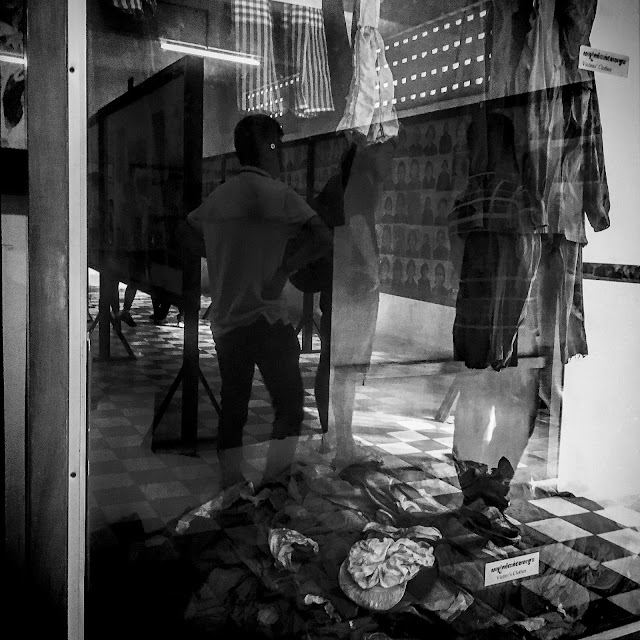Inside Pol Pot’s School for Torture in Phnom Penh
The climate of fear and distrust infamous
prison S-21 in Phnom Pen (Cambodia) has
few equals in twentieth-century history. In 1975, Tuol Svay Prey High School
was taken over by Pol Pot's security force and turned into a prison. Over
17,000 people held at S-21 were taken to the extermination camp at Choeung Ek
to be executed; detainees who died during torture were buried in mass graves in
the prison grounds. S-21 has been turned into the Tuol Sleng Museum, which
serves as a testament to the crimes of the Khmer Rouge. Like the Nazis, the
Khmer Rouge was meticulous in keeping
records of their barbarism. Each prisoner who passed through S.21 was
photographed, sometimes before and after being tortured. When Vietnam invaded
Cambodia in 1979, S-21’s staff fled, leaving its last seven prisoners alive –
seven men whose executions had been briefly stayed to prolong their usefulness:
normally, after confession, execution followed immediately. S-21 is not well
known – certainly not by the standards of Auschwitz or the Gulag Archipelago.
That we’re condemned to repeat forgotten history has become so cliched a cliche
that it’s almost meaningless – but S-21 was not the last of the breed. There
are prisons in the People’s Republic of China where prisoners of conscience are
tortured, murdered, and harvested for their organs – by the tens of thousands.
There are S-21-style prisons in North Korea – the main difference is that
they’re much larger: the Committee for Human Rights in North Korea estimates
that the DPRK’s political prisons contain between 150,000 and 200,000
prisoners.
-->
 |
| The prison was guarded by 50 soldiers and was surrounded by a corrugated tin fence and two barbed wire enclosures. Inside S-21, the classrooms has been converted into cells in which about 40 to 100 low-status prisoners were contained. |
 |
| Around 1.7 million people, or a fifth of the population, died in Cambodia during just over three years of Khmer Rouge rule. |
 |
| Khmer Rouge security officials used acid and pliers to torture inmates and disemboweled a detainee and consumed her organs, according to witness testimony given in Phnom Penh in 2015. |
 |
| The sole purpose of S-21 was to extract confessions from political prisoners before they were taken away for execution outside of the capital near the farming village of Choeung Ek. |
 |
| Nearly 20,000 people are known to have entered Tuol Sleng; of these only six are known to have survived. |






Comments
Post a Comment